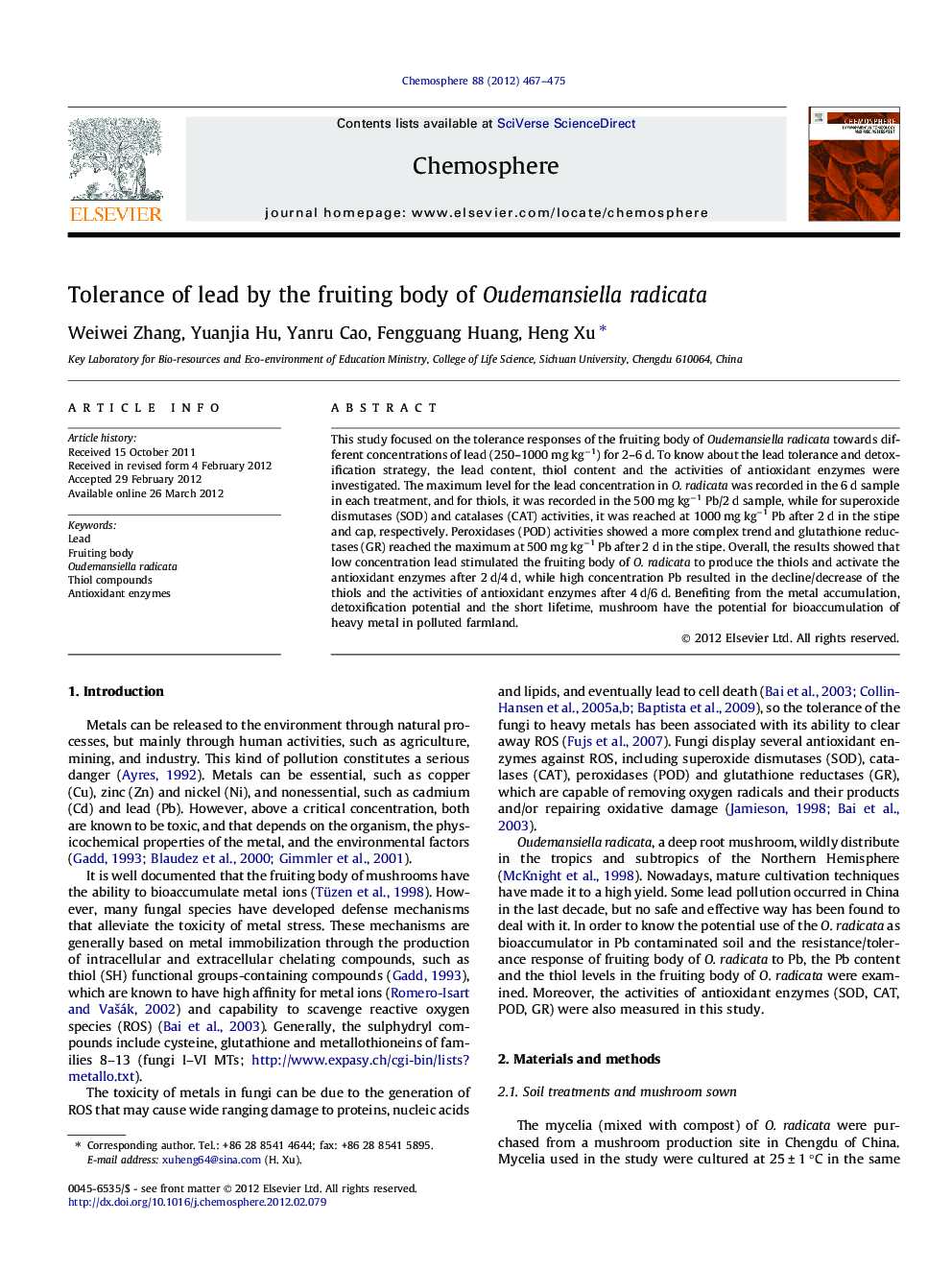| Article ID | Journal | Published Year | Pages | File Type |
|---|---|---|---|---|
| 4410057 | Chemosphere | 2012 | 9 Pages |
This study focused on the tolerance responses of the fruiting body of Oudemansiella radicata towards different concentrations of lead (250–1000 mg kg−1) for 2–6 d. To know about the lead tolerance and detoxification strategy, the lead content, thiol content and the activities of antioxidant enzymes were investigated. The maximum level for the lead concentration in O. radicata was recorded in the 6 d sample in each treatment, and for thiols, it was recorded in the 500 mg kg−1 Pb/2 d sample, while for superoxide dismutases (SOD) and catalases (CAT) activities, it was reached at 1000 mg kg−1 Pb after 2 d in the stipe and cap, respectively. Peroxidases (POD) activities showed a more complex trend and glutathione reductases (GR) reached the maximum at 500 mg kg−1 Pb after 2 d in the stipe. Overall, the results showed that low concentration lead stimulated the fruiting body of O. radicata to produce the thiols and activate the antioxidant enzymes after 2 d/4 d, while high concentration Pb resulted in the decline/decrease of the thiols and the activities of antioxidant enzymes after 4 d/6 d. Benefiting from the metal accumulation, detoxification potential and the short lifetime, mushroom have the potential for bioaccumulation of heavy metal in polluted farmland.
► The material is the fruiting body of Oudemansiella radicata. ► There are two variable factors, the growing-time and the Pb concentration in soil. ► We study on the tolerance response to Pb.
